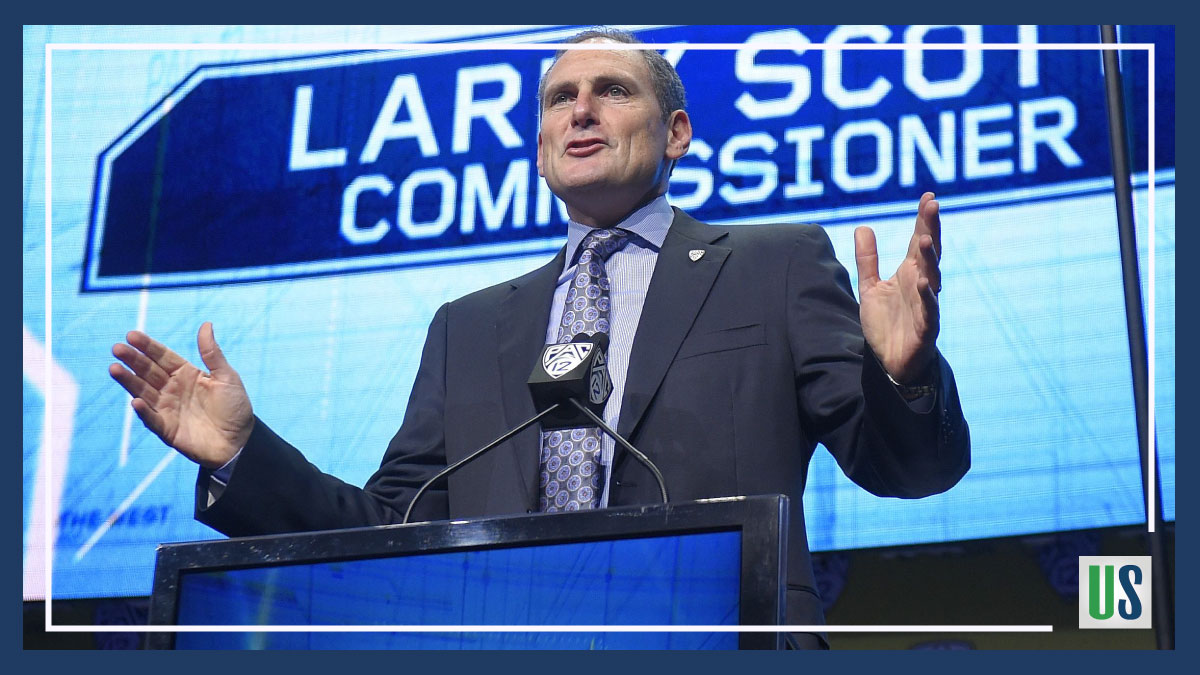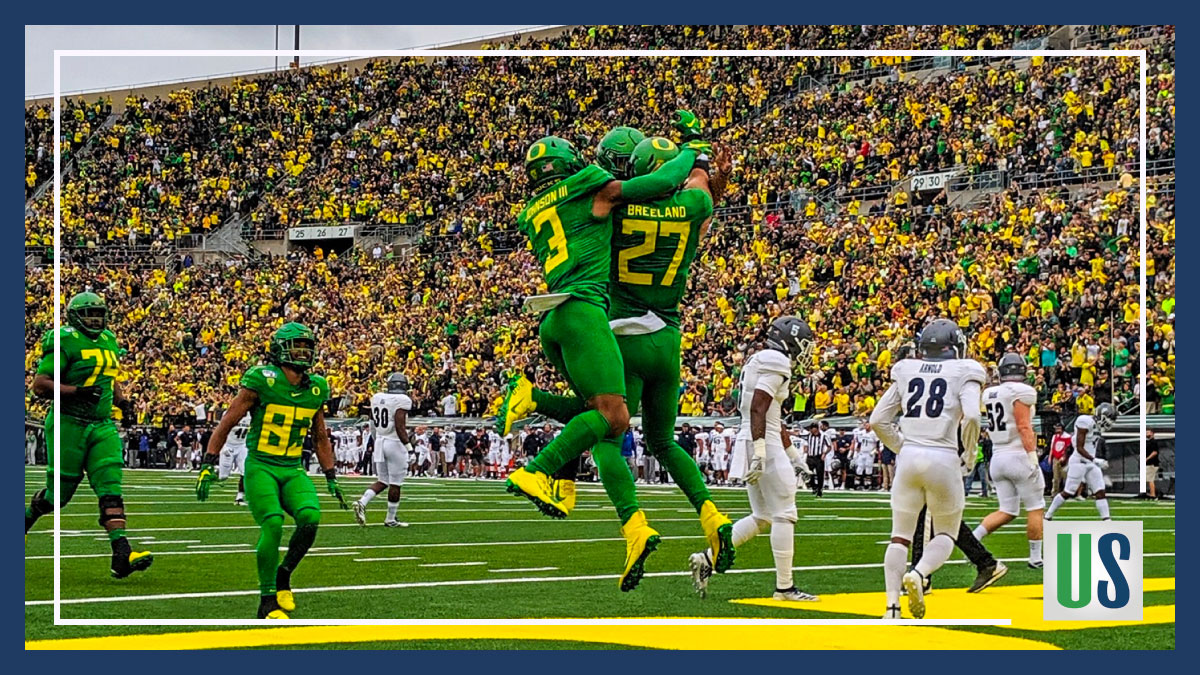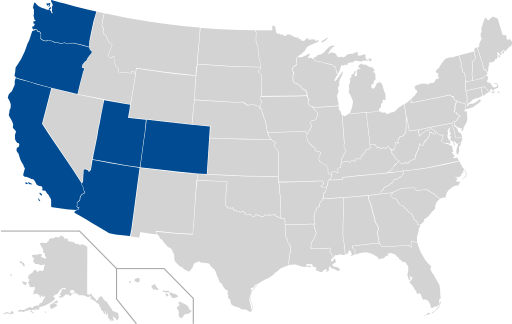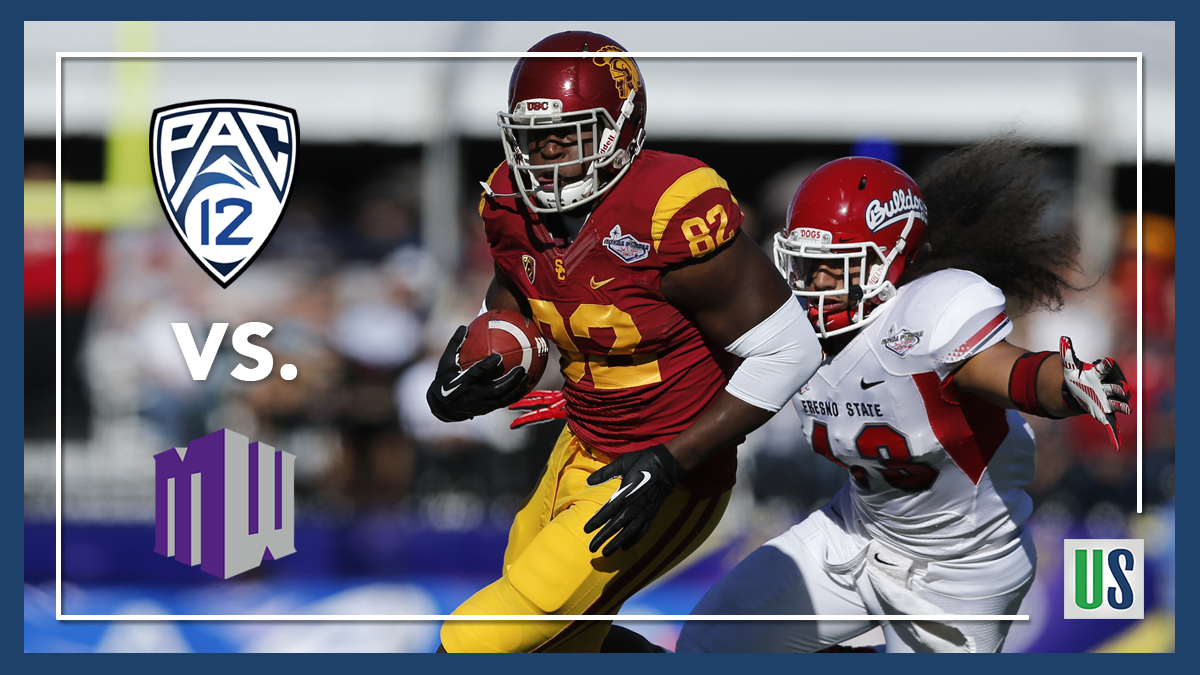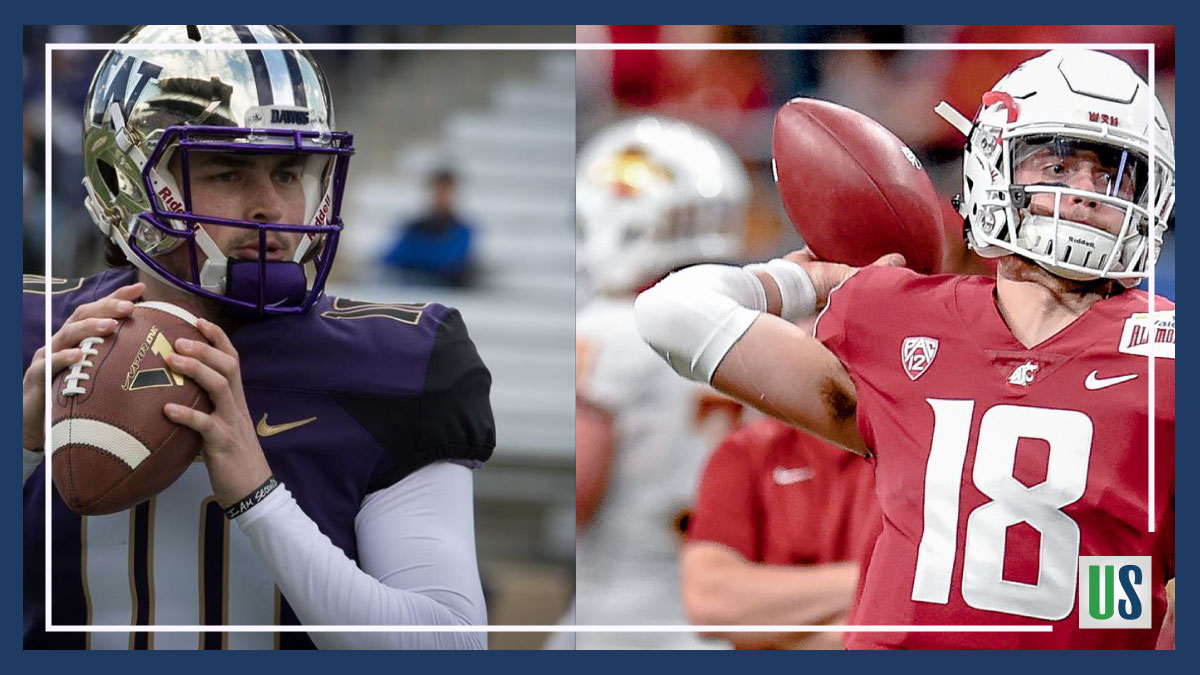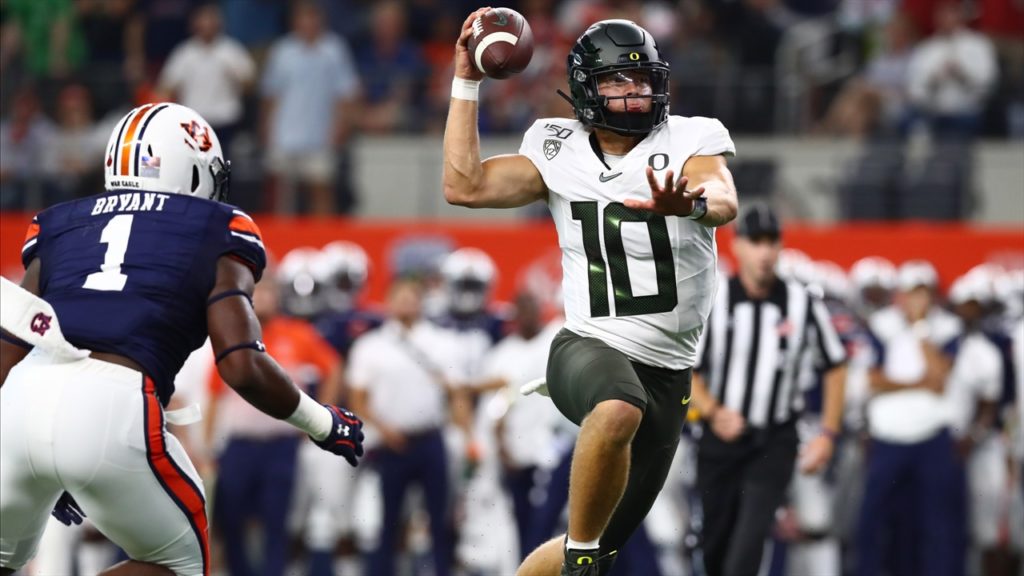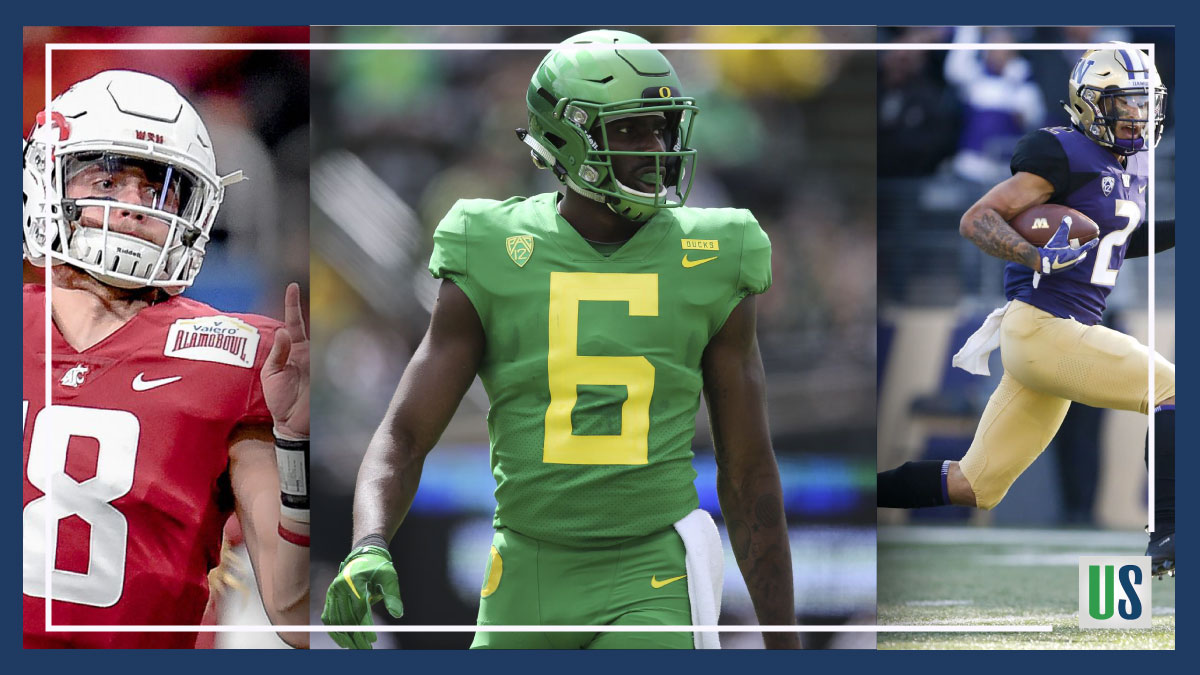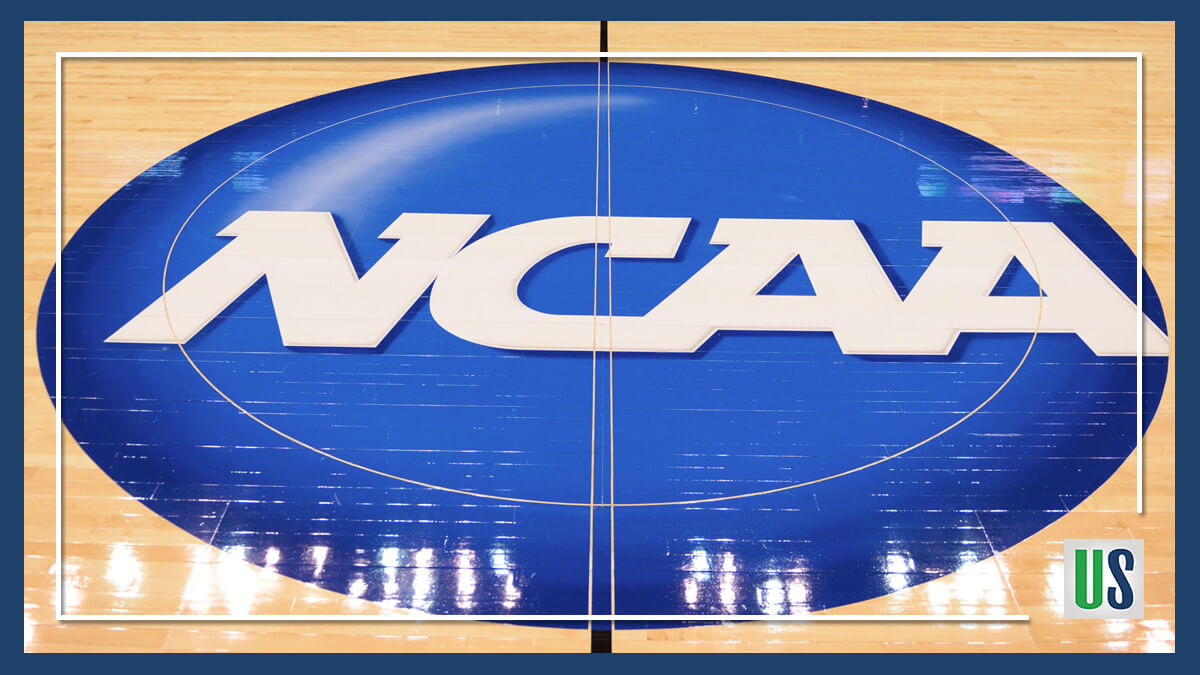College football is finally here. The Power Rankings are in and the season has started. But the Pac-12 season is more than just teams and team-wins. There is an individual end game… The NFL Draft.
Each year, a maximum of 256 college athletes can be drafted each year by the NFL. Only 256. Out of every college and thousands upon thousands of draft prospects. Most players make their way onto scouts’ lists early in their collegiate careers. But, for this set of senior, offensive Pac-12 players, they desperately need to make the most of their final season.
The Five Offensive Pac-12 Players Needing it Most
Aaron Fuller – UW – Senior – Wide Receiver
With 58 receptions and 874 yards, Aaron Fuller finally had his breakout season in 2018. He led the Huskies in 2018 and looks to do the same this season. Even though UW lost the Rose Bowl, Fuller stood out with 7 receptions. Furthermore, he’s cemented himself on the Biletnikoff Award watch list.
Nonetheless, Fuller has a lot to prove this season. As many already know, the most talented wide receivers in college leave early for the draft. Of note though, the 2019 NFL draft was different. Deebo Samuel, JJ Arcega-Whiteside, Parris Campbell and Andy Isabella were drafted in the second round. All of them were seniors. So, there is definitely hope for Fuller. And with 874 yards, he certainly has a good base to build off of.
But, he still needs to step up. Fuller has to display explosiveness. At 5-foot-11, 188lbs, he’s not going to turn heads like DK Metcalf. However, he’s the type of receiver the NFL is evolving to enjoy. As a senior, Fuller has to get the counting stats, display good route running and hands for the scouts, ball-out at the Senior Bowl. If he’s having his best year, hopefully he’ll get a chance to push his name into the draft with an NFL Combine invite as well. All in all, Fuller needs to be Washington’s steady and reliable playmaker this year.
Anthony Gordon – WSU – Redshirt Senior – Quarterback
2 games. 5 attempts. 3 completions. 17 yards. 1 interception.
That is all that Anthony Gordon, redshirt senior, has to show for his WSU career. Yet, somehow he earned the nod from Mike Leach. After losing Gardner Minshew, the Pac-12’s leader in pass attempts, pass completions, passing yards and passing touchdowns, Mike Leach turned to the older, yet unknown, Gordon.
As a true underdog, Gordon first played in Junior College for the City College of San Francisco. But, he led the CCCAA Conference in passing yards (3,864) and touchdowns (37) as a true freshman. In addition, Gordon led his team to a CCCAA Championship and earned the CCCAA Championship Game MVP. So, he’s at least got that going for him.
Now, after redshirting and sitting on the bench for three seasons at WSU, it’s Gordon’s time to shine. Fortunately for him, he plays for Washington State University. He’s got a team around him and the perfect head coach for quarterbacks. In Mike Leach’s Air Raid offense, quarterbacks are given friendly schemes and can compile big numbers. As a redshirt senior with no NCAA experience, Gordon needs everything he can get. Off all of the offensive Pac-12 players on this list, he’s the biggest underdog right now. In order to make it to the NFL, he needs to brand his name on the NFL scout list with big-time throws and massive numbers.
Noah Togiai – OSU – Redshirt Senior – Tight End
Snakebitten by injuries, Noah Togiai has to prove that he can stay healthy. After breaking out in 2017 with 34 receptions, 461 receiving yards and 2 touchdowns, Togiai caught just 10 passes in 2018. His production took a major dip and injuries were a large part of that.
“He’s done a lot of good things,” Beavers offensive coordinator Brian Lindgren told NBCSNW. “I think last year he was probably like 80 percent… I don’t think we really saw what he’s capable of doing in the pass game.”
After tearing his ACL in the Beavers’ second game of 2016. Additionally, he missed the first three games of the 2018 season. Thankfully, Togiai was granted an extra season of eligibility in 2017 because of his ACL tear. He’s lucky. Because of this medical hardship season, Togiai didn’t have to finish his collegiate career on a 10 reception, 77 yard season. However, he needs to prove he is able to withstand the brutality of an NFL-level game. Can he do that? It’s unclear, especially considering he’s battling an ankle injury he sustained in spring camp. But, if he can stay healthy, Togiai could become Oregon State’s third receiver and one of the best offensive Pac-12 players at the tight end position.
Juwan Johnson – Oregon – Redshirt Senior – Wide Receiver
Unfortunately for Oregon, their wide receiving corps hit the injury bug. Brenden Schooler, Mycah Pittman and Juwan Johnson are each dealing with their own. While Schooler and Pittman are likely out for the first few weeks, there is hope that Johnson can suit up for Auburn.
If Johnson is able to suit up, he could quickly become a favorite target for Justin Herbert. Because if the Penn State transfer is one thing, he is a large target. At 6-foot-4, 230lbs, Johnson certainly garners attention. He’s big, powerful and has a frame unlike the other receivers on the team. Johnson also brings experience to the Ducks squad. He played the most games of any Ducks receiver. As a veteran, he is going to be both a role-model for younger receivers and a reliable option for Herbert.
“I’m here to be a leader,” he said. “That’s my job here, come in and bring a leader and bring that energy to the team. I want to bring the guys up so we can win a Pac-12 championship, national championship and those sort of things.”
If he can regain his health, Juwan Johnson can step into the void and separate himself from the rest of Oregon’s playmakers. The path for him to breakout in the list of top, offensive Pac-12 players is there. He’s on a great offense, on a top team, with needs at the position. Get healthy and get out there Johnson.
Cameron Scarlett – Stanford Redshirt Senior – Running Back
No Bryce Love. Washington drafted him in the fourth-round of the 2019 draft. No JJ Arcega-Whiteside. The Philadelphia Eagles picked him up in the second round. No Trenton Irwin. The Miami Dolphins scooped him up as an undrafted free-agent. So, Stanford lost their feature back and two top receivers. Someone needs to step up.
Out of the shadows steps Cameron Scarlett. The fifth-year back has yet to break out. Which makes complete sense. He’s played behind not only Bryce Love, but Christian McCaffrey as well. It’s not easy to usurp Heisman hopeful running backs. But this year, he doesn’t have to. The backfield is his for the taking.
Fortunately for Scarlett, he’s not completely green. In both 2017 and 2018, he displayed versatility in rushing and receiving. Scarlett’s 719 rushing yards and 283 receiving yards in 2017 and 2018 display this. He also notched 8 rushing touchdowns in each, along with 1 receiving touchdown in 2018. Finding the paydirt is obviously a good thing. Moreover, Scarlett displayed exceptional special-teams play. In 2017, his 1,008 kick return yards ranked second nationally and first in the Pac-12.
His feature-back size (6-foot-1, 216lbs), combined with his dual-threat ability and versatility in the return-game, should provide ample opportunity for him in 2019. But, he’s a redshirt-senior without a feature-back year on his resume. Scarlett has to make that happen. In 2019, he needs to capitalize on volume and display his ability to be a bell-cow back.


